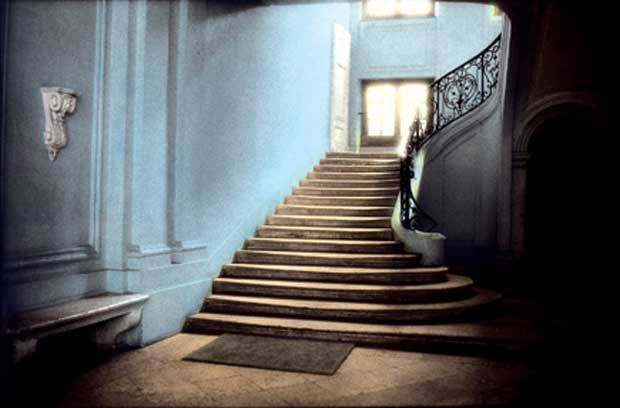Photographer melds digital, traditional techniques
Published November 15, 2016
Photographer Jill Enfield, whose eponymous exhibition is on view at the May Gallery at Webster University, uses a combination of 19th– and 21st-century photographic techniques to create striking images that span the centuries in both appearance and method of production.
Enfield uses digital technology as well as an early process called collodion wet plate. Early photographers created collodion emulsion by soaking cotton in sulfuric and nitric acids, then dissolving it in alcohol and ether. They poured the emulsion onto a glass plate, placed the plate into silver nitrate for several minutes, and finally exposed the plate in a large format camera while the plate was still wet. After that, in the darkroom they developed, rinsed, and fixed the plate. At that time they used cyanide as fixer. Today, many photographers use modern film fixer instead of cyanide.
The exhibition features both black-and-white and color prints. Subjects include still-lifes, portraits, architecture, and landscapes. Most of the color prints are hand-colored. Some images were shot digitally; viewers can spot the collodion wet plate prints due to large blotches, smears, and streaks. Regarding these, Enfield notes, “I try not to be so neat about the process. I find that the artifacts add to the mystery of the image.”
This mystery holds true even for one of the most iconic images: the Statue of Liberty. Enfield photographed it in black and white, from the statue’s right side in three-quarter view. The sky is awash with smears and streaks. Outlines of the statue are blurred. The photograph looks like it could have been taken when the statue was new.
The artist used a digital camera to capture the initial image. She explains, “I then made a digital positive, and then a wet plate 8” x 10” glass plate with my enlarger.”
Another beautiful example of blended techniques is a grand interior with a wide curving staircase. Enfield hand-painted the blue walls; sepia stairs and floor; and white marble bench, the door on the staircase landing, and the decorative sconce above the bench. The image looks like a vintage picture postcard from the early 20th century.
Enfield says, “The staircase is in Paris, France. I took an infrared film image, printed it in the darkroom, hand-painted it, and then scanned it into the computer and printed the image.”
She went all-digital when she shot two overlapping Mediterranean-style buildings in Siena, Italy. The corner of the building in the foreground at the left has closed green shutters and brown plastered walls. In the middleground, part of a similar building is visible. On this building, the plaster is falling away, exposing brick underneath.
“Jill Enfield” is on view through November 23. The May Gallery is located on the second floor of the Sverdrup Building at 8300 Big Bend Blvd. Gallery hours are Monday – Friday, 9:00 a.m. to 9:00 p.m.; Saturday and Sunday, 12:00 p.m. to 5:00 p.m. For more information, call 314-246-7673 or visit http://www.webster.edu/maygallery/.















